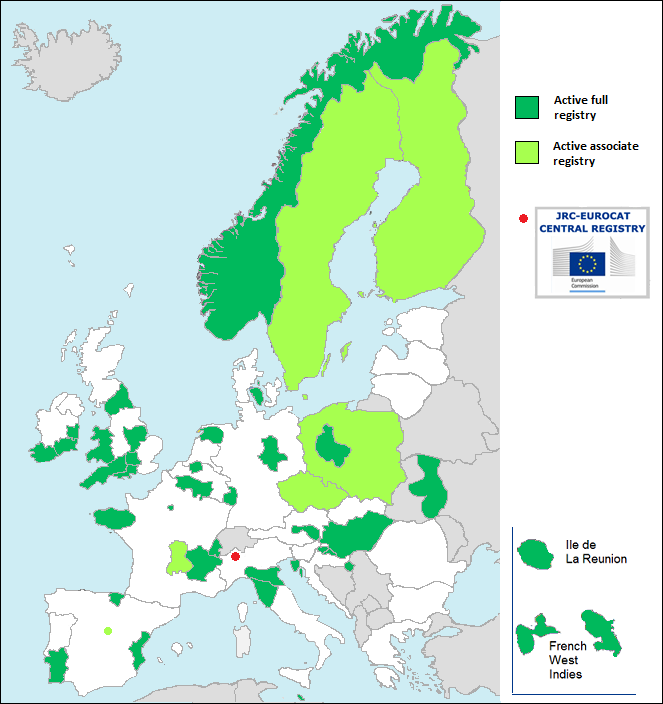
JRC scientists contributed to three registry based multi-centre studies carried by a team of international researchers to understand the prevalence of three rare diseases in Europe. The studies were based on data from the JRC-EUROCAT Central Registry.
The JRC-EUROCAT Central Registry collects data on congenital anomalies from population-based registries.
Every year, new data updates are used for scientific studies and epidemiological surveillance: estimating prevalence, prenatal diagnosis and perinatal mortality rates, trends and temporary cluster analyses.
Many of the congenital anomalies are either rare or very rare conditions and no individual registry has enough cases to accurately determine their prevalence. But, by combining data at European level, this can be achieved.
The JRC operates the Central Registry of the European Network for the Surveillance of Congenital Anomalies (EUROCAT) since 2015. The data cover about one third of all births in Europe and the Central Database contains more than 800,000 cases with congenital anomalies reported with high quality, standardised data since 1980.
The EUROCAT data were used in three scientific studies on septo-optic dysplasia, Beckwith Wiedemann syndrome and valproate syndrome.
- Septo-optic dysplasia is a rare congenital anomaly with clinical symptoms of visual impairment, hypopituitarism and developmental delays. The study covered 6.4 million births and 99 cases and is the first population based study to describe the prevalence of septo-optic dysplasia in Europe. Higher risk was found for younger mothers while forty percent of diagnoses occurred in fetuses with a prenatal diagnosis.
- Beckwith Wiedemann syndrome (BWSp) is a complex developmental disorder characterised by somatic overgrowth, macroglossia, abdominal wall defects, neonatal hypoglycemia, and predisposition to embryonal tumors. The study covered 9.6 million births and 371 cases and is a first ever population study of this scale on BWSp. Deep end extended evaluation of the characteristics of cases are reported and compared with previously published studies.
- Valproate syndrome includes facial dysmorphism, congenital anomalies, cognitive impairment and neuro-developmental problems in children with in-utero exposure to the anticonvulsant valproate. In the most recent guideline from the European Medicines Agency (EMA), it is recommended not to prescribe valproate to women or girls who may become pregnant. The study covered 2.74 million births and 28 cases and shows that the prevalence of valproate syndrome in Europe significantly decreased from 0.22 per 10,000 births in 2005/6 to 0.03 per 10,000 births in 2013/14.
These studies show the added value of combining data at European level, yielding results to inform policies and to support the over 30 million citizens in Europe who are living with rare diseases.

Read more in:
- E. Garne et al.: Epidemiology of septo-optic dysplasia with focus on prevalence and maternal age – A EUROCAT study. European Journal of Medical Genetics 61 (2018), pp.483-488, doi: 10.1016/j.ejmg.2018.05.010
- I. Barisic et al.: Beckwith Wiedemann syndrome: A population-based study on prevalence, prenatal diagnosis, associated anomalies and survival in Europe. European Journal of Medical Genetics 61 (2018), pp. 499-507, doi: 10.1016/j.ejmg.2018.05.014
- J.K. Morris et al.: Prevalence of valproate syndrome in Europe from 2005 to 2014: A registry based multi-centre study. European Journal of Medical Genetics 61 (2018), pp. 479-482, doi: 10.1016/j.ejmg.2018.0
Related Content
Epidemiology of septo-optic dysplasia with focus on prevalence and maternal age – A EUROCAT study.
Prevalence of valproate syndrome in Europe from 2005 to 2014: A registry based multi-centre study.
Details
- Publication date
- 28 January 2019
